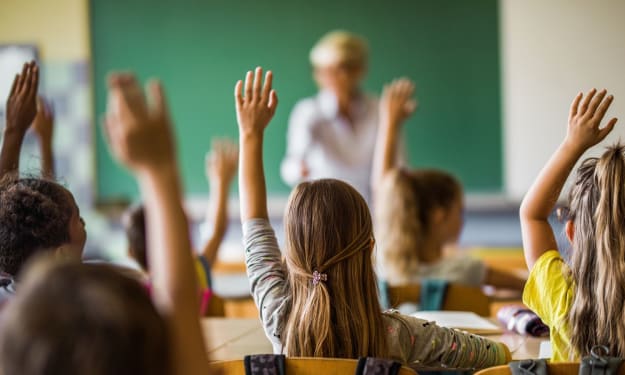
THE COVID AND POVERTY
THE COVID 19
The COVID-19 pandemic has affected the world in unprecedented ways since its emergence in 2019. The disease, caused by the SARS-CoV-2 virus, has led to millions of deaths and significant economic disruption. In this article, we will explore the symptoms and features of COVID-19, as well as current treatments and preventative measures.
Symptoms and Features of COVID-19
COVID-19 is a respiratory illness that can affect individuals of all ages. The symptoms of COVID-19 can vary from mild to severe and can take anywhere from two to fourteen days to appear after exposure to the virus. The most common symptoms of COVID-19 include:
1. Fever
2. Cough
3. Shortness of breath or difficulty breathing
4. Fatigue
5. Muscle or body aches
6. Headache
7. New loss of taste or smell
8. Sore throat
9. Congestion or runny nose
10.Nausea or vomiting
11.Diarrhea
It is important to note that not all individuals infected with COVID-19 will experience all of these symptoms, and some may not have any symptoms at all. Additionally, some individuals with COVID-19 may experience severe symptoms, including difficulty breathing, chest pain or pressure, confusion, and bluish lips or face, which require immediate medical attention.
COVID-19 is primarily spread through respiratory droplets produced when an infected person talks, coughs, or sneezes. It can also be spread by touching a surface contaminated with the virus and then touching the mouth, nose, or eyes.
Treatment for COVID-19
There is currently no cure for COVID-19, but treatments are available to manage symptoms and reduce the severity of the illness. Treatment options for COVID-19 depend on the severity of symptoms and may include:
• Rest and hydration
• Over-the-counter pain relievers such as acetaminophen or ibuprofen to reduce fever and relieve pain
• Supplemental oxygen or mechanical ventilation for severe respiratory distress
• Antiviral medications such as Remdesivir or monoclonal antibodies, which may help shorten the duration of illness or prevent severe illness in high-risk individuals
• Dexamethasone, a steroid medication, may be used in hospitalized patients who require oxygen therapy to reduce inflammation and improve oxygenation
It is important to note that individuals should not self-medicate or attempt to treat themselves without consulting a healthcare provider. Individuals with COVID-19 should also isolate themselves from others to prevent further spread of the virus.
Preventative Measures for COVID-19
• Preventative measures are key in slowing the spread of COVID-19. The Centers for Disease Control and Prevention (CDC) recommend the following measures:
• Get vaccinated against COVID-19
• Wear a mask in public settings and around others who do not live in your household, especially when social distancing measures cannot be maintained
• Practice social distancing by staying at least 6 feet apart from others
• Wash your hands frequently with soap and water for at least 20 seconds, or use hand sanitizer containing at least 60% alcohol
• Avoid large gatherings and nonessential travel
• Cover your mouth and nose with a tissue or your elbow when you cough or sneeze
• Clean and disinfect frequently touched surfaces daily.
COVID-19 is a highly contagious respiratory illness that can cause mild to severe symptoms. Treatment options are available to manage symptoms and reduce the severity of the illness, but preventative measures are crucial in slowing the spread of the virus. By getting vaccinated, wearing masks, practicing social distancing, and following good hygiene practices, we can all do our part in preventing the spread of COVID-19 and protecting ourselves .
VACCINES
The COVID-19 pandemic has brought unprecedented challenges to the world, and vaccines are a critical tool in fighting this disease. Since the emergence of COVID-19, multiple vaccines have been developed and authorized for use around the world. In this article, we will explore the vaccines introduced for COVID-19 in a detailed manner.
Types of COVID-19 Vaccines
There are currently four types of COVID-19 vaccines authorized for emergency use by the World Health Organization (WHO) and/or the United States Food and Drug Administration (FDA):
mRNA Vaccines: These vaccines use messenger RNA (mRNA) to instruct cells to produce a protein found on the surface of the SARS-CoV-2 virus. The immune system then recognizes this protein as foreign and produces a response, including the production of antibodies. The mRNA vaccines authorized for use against COVID-19 are the Pfizer-BioNTech vaccine and the Moderna vaccine.
Viral Vector Vaccines: These vaccines use a weakened or inactivated virus, such as a cold virus, to deliver genetic material from the SARS-CoV-2 virus to cells in the body. This genetic material instructs cells to produce a protein found on the surface of the SARS-CoV-2 virus, which triggers an immune response. The viral vector vaccines authorized for use against COVID-19 are the Johnson & Johnson (Janssen) vaccine and the AstraZeneca vaccine.
Protein Subunit Vaccines: These vaccines use a piece of the SARS-CoV-2 virus, such as a protein or sugar molecule, to trigger an immune response. The protein subunit vaccines authorized for use against COVID-19 are the Novavax vaccine and the Sanofi/GlaxoSmithKline vaccine.
Inactivated Virus Vaccines: These vaccines use a virus that has been killed or inactivated to stimulate an immune response. The Sinovac and Sinopharm vaccines are examples of inactivated virus vaccines authorized for use against COVID-19.
Efficacy of COVID-19 Vaccines
The efficacy of COVID-19 vaccines varies depending on the vaccine and the population being studied. In general, the vaccines have been shown to be highly effective in preventing severe illness, hospitalization, and death from COVID-19. The following are the reported efficacy rates for the vaccines currently authorized for emergency use:
• Pfizer-BioNTech: 95% efficacy against COVID-19
• Moderna: 94.1% efficacy against COVID-19
• Johnson & Johnson (Janssen): 66.3% efficacy against COVID-19
• AstraZeneca: 70% efficacy against COVID-19
• Novavax: 89.3% efficacy against COVID-19
• Sanofi/GlaxoSmithKline: Data pending
• Sinovac: 50.4% efficacy against COVID-19
• Sinopharm: 79% efficacy against COVID-19
It is important to note that these efficacy rates can change as more data becomes available and as new variants of the virus emerge.
Side Effects of COVID-19 Vaccines
Like all vaccines, COVID-19 vaccines can cause side effects. The most common side effects reported with the vaccines include:
1. Pain and swelling at the injection site
2. Fatigue
3. Headache
4. Muscle aches
5. Chills
6. Fever
7. Nausea
Most side effects are mild to moderate and resolve within a few days. Serious side effects are rare, but may include allergic reactions and blood clotting disorders.
Availability and Distribution of COVID-19 Vaccines
COVID-19 vaccines are being distributed globally through a variety of channels, including government programs, healthcare providers, and international organizations. The availability of vaccines varies by country
GOVERNMENT AND COVID
The COVID-19 pandemic has brought unprecedented challenges to governments around the world, requiring quick and effective action to limit the spread of the virus and protect public health. In this article, we will explore the measures that governments took for COVID-19 in detail.
Stay-at-Home Orders and Lockdowns: One of the most effective measures taken by governments to control the spread of COVID-19 was the implementation of stay-at-home orders and lockdowns. These measures required people to stay home except for essential activities like grocery shopping, healthcare appointments, and work in essential industries. Many countries implemented strict lockdowns with penalties for non-compliance, while others used a softer approach with recommendations for people to stay home.
Social Distancing and Mask Mandates: Social distancing and mask mandates were also implemented to slow the spread of COVID-19. Social distancing measures included requirements to maintain a distance of at least six feet from other people, limits on the number of people allowed in public spaces, and restrictions on large gatherings like concerts and sporting events. Mask mandates required people to wear masks in public spaces, including indoors and outdoors, to prevent the spread of the virus.
Testing and Contact Tracing: Testing and contact tracing were critical components of the COVID-19 response. Governments implemented widespread testing programs to identify people infected with COVID-19, and contact tracing programs to track down people who may have been exposed to the virus. These programs were essential in identifying outbreaks and limiting the spread of the virus.
Vaccination Programs: Vaccination programs were also implemented by governments to protect people from COVID-19. Governments worked with pharmaceutical companies to develop and distribute vaccines, and many countries established priority groups for vaccination based on risk factors like age, occupation, and underlying health conditions.
Economic Relief Packages: The COVID-19 pandemic also had significant economic consequences, with many people losing their jobs or experiencing financial hardship due to lockdowns and restrictions. Governments implemented economic relief packages to help businesses and individuals affected by the pandemic, including stimulus payments, loans, and grants.
Travel Restrictions: Governments also implemented travel restrictions to limit the spread of COVID-19 across borders. Many countries implemented strict quarantine requirements for people arriving from other countries, and some countries closed their borders entirely to non-citizens.
Public Awareness Campaigns: Public awareness campaigns were launched by governments to inform people about COVID-19 and how to protect themselves and others. These campaigns included public service announcements, social media campaigns, and educational materials to raise awareness about the risks of COVID-19 and the importance of following public health guidelines.
Governments around the world took a variety of measures to control the spread of COVID-19 and protect public health. These measures included stay-at-home orders, social distancing and mask mandates, testing and contact tracing programs, vaccination programs, economic relief packages, travel restrictions, and public awareness campaigns. While the COVID-19 pandemic continues to be a global challenge, the measures implemented by governments have been effective in limiting the spread of disease
THE POOR AND COVID
The COVID-19 pandemic has had a significant impact on people living in poverty, both in developed and developing countries. People living in poverty often face multiple challenges, including lack of access to healthcare, limited resources, and crowded living conditions, which make them particularly vulnerable to the effects of the pandemic. In this article, we will explore how COVID-19 affected people below poverty and what they did to overcome these challenges.
Loss of Income and Livelihoods: One of the most significant impacts of COVID-19 on people living in poverty was the loss of income and livelihoods. Many people lost their jobs or saw their income reduced as a result of the pandemic, which made it challenging for them to pay for basic necessities like food, housing, and healthcare. To overcome this, some people turned to informal work, such as street vending or selling goods online, while others relied on social welfare programs or financial assistance from non-governmental organizations (NGOs) or the government.
Limited Access to Healthcare: People living in poverty often have limited access to healthcare, which can make them more vulnerable to COVID-19. COVID-19 overwhelmed healthcare systems in many countries, making it difficult for people to access medical care, especially in areas with a high poverty rate. To overcome this, NGOs and community organizations provided basic medical care and distributed personal protective equipment (PPE) to protect people from the virus.
Lack of Adequate Housing: People living in poverty often live in crowded and unsanitary conditions, which can increase the risk of contracting COVID-19. To overcome this, some governments and NGOs provided emergency shelter to people who were homeless or at risk of becoming homeless. In some cases, people living in poverty took matters into their own hands and built makeshift shelters or improved their living conditions by adding partitions to create more space.
Limited Access to Education: The COVID-19 pandemic also had a significant impact on education, with many schools and universities closed to prevent the spread of the virus. This had a disproportionate impact on children living in poverty, who may not have access to online learning resources or have the necessary technology to participate in virtual classes. NGOs and community organizations worked to provide educational resources to children living in poverty, including distributing books and providing tutoring services.
Mental Health Challenges: The COVID-19 pandemic also had significant mental health consequences, with many people experiencing increased stress, anxiety, and depression as a result of the pandemic. People living in poverty may be particularly vulnerable to mental health challenges, given the additional stressors they face, including financial insecurity and limited access to healthcare. To overcome this, NGOs and community organizations provided mental health counseling and support services to people living in poverty.
The COVID-19 pandemic has had a significant impact on people living in poverty, who are often more vulnerable to the effects of the pandemic due to their limited resources and access to healthcare. However, people living in poverty have also shown incredible resilience and resourcefulness in overcoming these challenges, with the help of NGOs, community organizations, and government support. It is essential for governments, NGOs, and the international community to continue working together to support people living in poverty and ensure that they have the resources and support they need to overcome the challenges of the COVID-19 pandemic.
According to the World Bank, the COVID-19 pandemic is estimated to have pushed an additional 97 million people into extreme poverty in 2020. The pandemic has led to a loss of income and livelihoods for millions of people, particularly in developing countries where social safety nets are weak or non-existent. In addition, lockdowns and restrictions on movement have disrupted global food supply chains, leading to food shortages and price hikes, which have hit vulnerable populations the hardest.
The pandemic has also had a disproportionate impact on women and children living in poverty. School closures have disrupted education, leading to learning loss and increased risks of child labor, early marriage, and teenage pregnancies. Women have been particularly affected by the economic impact of the pandemic, as they are more likely to work in informal sectors or in low-paid jobs with limited social protection.
The COVID-19 pandemic and poverty is a complex and heartbreaking one, with millions of people around the world struggling to survive and cope with the devastating impact of the virus on their lives and livelihoods. It is crucial that we continue to work together as a global community to address the underlying causes of poverty, inequality, and social exclusion, and to build more resilient and equitable societies.
The COVID-19 pandemic has brought to light the deep-rooted issue of poverty and its devastating impact on society. The pandemic has exposed the vulnerabilities of the global economy, particularly for those who are living in poverty. It has had a disproportionate impact on the world’s most vulnerable populations, who face a daily struggle to survive.
The pandemic has created a ripple effect, causing loss of jobs and income, increased food insecurity, and disrupted access to healthcare, education, and social services. These challenges have been especially difficult for people living in poverty, who have limited resources and little or no safety net to fall back on.
IMPACT OF COVID ON POVERTY
The COVID-19 pandemic has had a severe impact on poverty around the world. The pandemic has affected various aspects of people's lives, from their health to their income and employment opportunities.
In low- and middle-income countries, the pandemic has caused an increase in extreme poverty. It has also disrupted healthcare systems and affected the delivery of essential services such as education, water, sanitation, and hygiene.
The pandemic has also widened the gap between the rich and poor. Many people in low-income countries have lost their jobs, while many in high-income countries have been able to work from home. The pandemic has highlighted the importance of access to healthcare, social protection, and basic services.
IMPACT OF POVERTY ON COVID
Poverty is a significant risk factor for contracting and spreading COVID-19. Those living in poverty are more likely to live in crowded conditions, which increases the risk of transmission. They are also more likely to have underlying health conditions, such as malnutrition, which puts them at higher risk for severe illness.
Poverty also affects access to healthcare, which can make it challenging to diagnose and treat COVID-19. In low-income countries, there is a lack of access to testing and treatment, making it more difficult to track and contain the virus.
Overcoming the Challenges of Poverty and COVID-19
The challenges faced by those living in poverty during the pandemic are immense. However, there are also many positive stories of people coming together to overcome these challenges.
Governments and NGOs have implemented measures to mitigate the impact of the pandemic on vulnerable populations. This includes social protection programs, cash transfers, and food assistance. In addition, innovative solutions have been developed to address the challenges of the pandemic, such as mobile clinics to deliver healthcare services to remote areas and mobile money transfers to facilitate cash assistance.
Many communities have also come together to support each other during the pandemic. Neighbors have organized food and supply distributions, and community health workers have provided health education and support. These efforts demonstrate the resilience and strength of communities facing significant challenges.
CONCLUSION
The COVID-19 pandemic has highlighted the urgent need to address poverty and its impact on society. The pandemic has exposed the inequalities that exist in our societies and has made it clear that we need to work together to build more resilient and equitable systems.
Addressing poverty requires a multi-faceted approach that includes improving access to healthcare, education, and social services. It also requires innovative solutions to address the challenges of the pandemic, such as mobile clinics, cash transfers, and food assistance.
As we work to overcome the challenges of poverty and COVID-19, it is essential that we do not forget the lessons learned during this pandemic. We must continue to work together as a global community to build more equitable and resilient societies that can withstand future crises.
About the Creator
Jamie hunson
The words are too much powerful than swords.






Comments
There are no comments for this story
Be the first to respond and start the conversation.